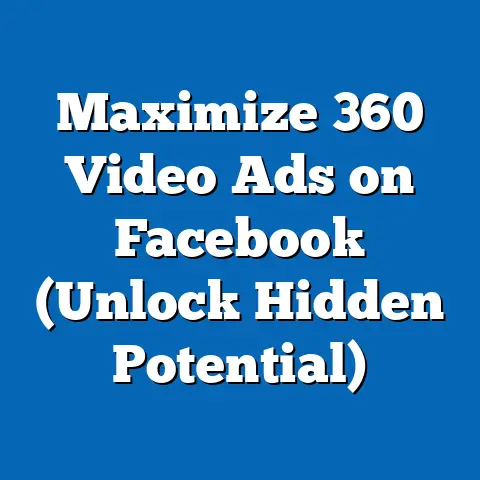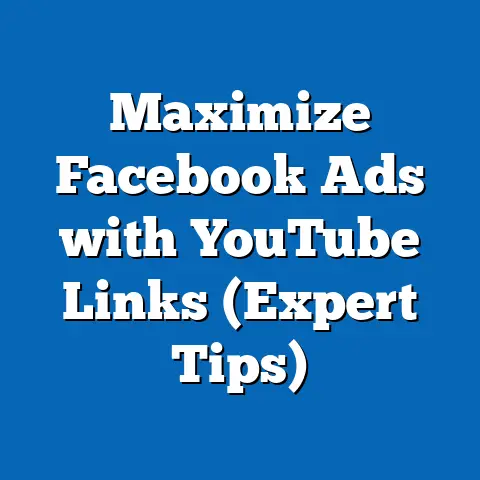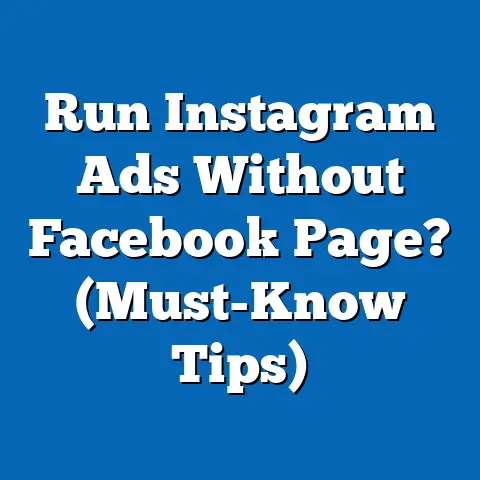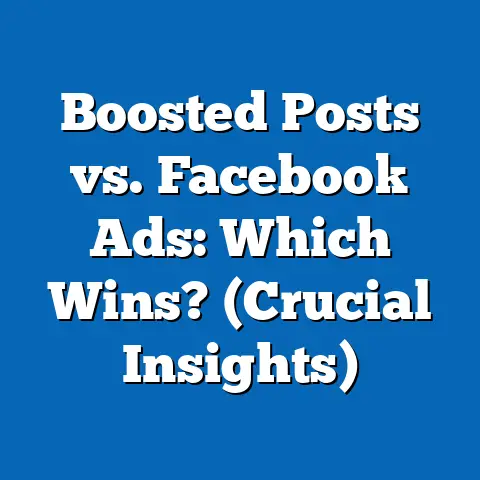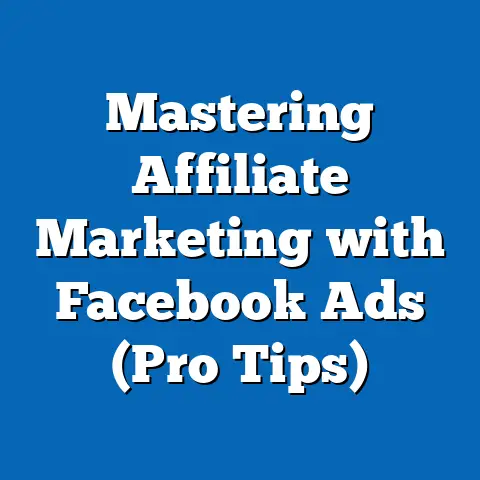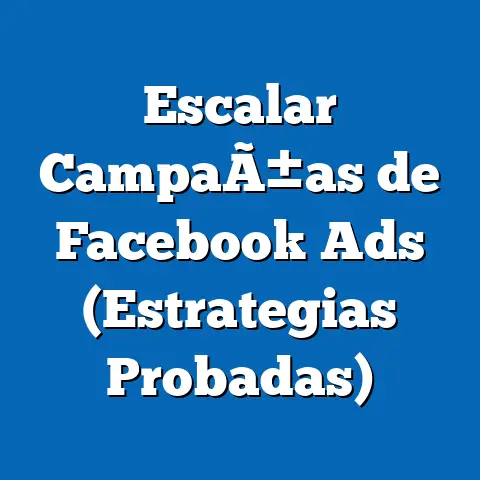Unlock Facebook Ads Library Secrets (Expert Revealed Insights)
The world is getting greener, and so is marketing. I’ve watched with increasing interest as businesses pivot towards eco-friendliness, not just in their operations but also in how they promote their products. Consumers are demanding it, and smart companies are listening. We’re seeing a surge in brands showcasing sustainable initiatives, from biodegradable packaging to carbon-neutral shipping. But how do you effectively communicate these values and attract the right audience on a platform like Facebook?
That’s where the Facebook Ads Library comes in. Think of it as a treasure trove of advertising data, a place where you can peek behind the curtain and see what other businesses are doing. For companies promoting eco-friendly products, this tool is invaluable. It allows you to analyze successful campaigns, understand what resonates with environmentally conscious consumers, and refine your own strategies accordingly.
Section 1: Understanding the Facebook Ads Library
So, what exactly is the Facebook Ads Library? In simple terms, it’s a publicly accessible database of all active ads running on Facebook and Instagram. It’s designed to promote transparency by allowing anyone to see the ads associated with any Facebook Page, regardless of whether or not they’re targeted to them.
This feature is incredibly powerful. Before its existence, understanding the landscape of Facebook advertising was like trying to navigate a maze blindfolded. Now, we have a map. We can see what messaging, visuals, and strategies are being used by other businesses, including our competitors.
For marketers, the Ads Library is more than just a curiosity; it’s a crucial tool. In the context of eco-friendly brands, it’s especially important. Today’s consumers are savvy and skeptical. They want to know that the brands they support are genuinely committed to sustainability, not just greenwashing. The Ads Library allows us to analyze how brands are positioning themselves, the claims they’re making, and how they’re engaging with their audience.
Transparency in advertising is no longer optional; it’s expected. Recent studies show that a staggering 86% of consumers say transparency from brands is more important than ever. This means that eco-friendly brands need to be authentic and honest in their advertising. The Ads Library helps us ensure that our messaging aligns with our values and resonates with consumers who are seeking genuine sustainability.
Takeaway: The Facebook Ads Library is a public database of all active ads on Facebook and Instagram. It’s a vital tool for marketers, particularly those in the eco-friendly sector, as it promotes transparency and allows for competitive analysis.
Section 2: Navigating the Facebook Ads Library
Okay, let’s get practical. How do you actually use the Facebook Ads Library? It’s surprisingly simple.
- Accessing the Library: Go to Facebook Ads Library. You don’t even need a Facebook account to access it.
- Selecting a Country: Choose the country you want to focus on. This is important because ad targeting and regulations can vary significantly from region to region.
- Searching for Ads: In the search bar, you can either search for a specific brand or a keyword. For example, if you want to see ads related to “organic cotton,” you can type that in.
-
Filtering Results: The Ads Library provides several filters to narrow down your search. You can filter by:
- Ad Category: Choose “All Ads” to see all ads or select a specific category like “Issues, Elections or Politics.”
- Platform: Filter by Facebook, Instagram, Audience Network, or Messenger.
- Date Range: Specify a date range to see ads that were active during a particular period.
Filtering Results: The Ads Library provides several filters to narrow down your search. You can filter by:
- Ad Category: Choose “All Ads” to see all ads or select a specific category like “Issues, Elections or Politics.”
- Platform: Filter by Facebook, Instagram, Audience Network, or Messenger.
- Date Range: Specify a date range to see ads that were active during a particular period.
Once you’ve entered your search terms and applied your filters, you’ll see a list of all the active ads that match your criteria. You can then click on each ad to see more details, including:
- The Page Running the Ad: The name and profile picture of the Facebook Page.
- Ad Creative: The image or video used in the ad.
- Ad Copy: The text that accompanies the ad.
- Call-to-Action (CTA): The button or link that encourages users to take a specific action (e.g., “Shop Now,” “Learn More”).
- First Seen: The date when the ad first started running.
- Platforms Run: Whether the ad runs on Facebook, Instagram, Audience Network, or Messenger.
Analyzing ad formats is crucial for understanding what works best for eco-friendly products. Carousel ads, for example, allow you to showcase multiple products or highlight different aspects of your sustainability initiatives. Video ads are great for telling compelling stories about your brand’s mission and impact. Image ads, on the other hand, are ideal for capturing attention with visually appealing graphics.
Takeaway: The Facebook Ads Library is easy to access and navigate. Use the search and filter options to find relevant ads for eco-friendly products and analyze their formats, messaging, and CTAs.
Section 3: Analyzing Competitor Ads for Eco-Friendly Campaigns
Competitive analysis is a cornerstone of any successful advertising strategy, and it’s especially critical in the eco-friendly sector. The reason is simple: the market is becoming increasingly crowded, and consumers have more choices than ever before. To stand out, you need to understand what your competitors are doing, what’s working for them, and where you can differentiate yourself.
The Facebook Ads Library makes this process much easier. Here’s how to approach it:
- Identify Your Competitors: Start by identifying the key players in your niche. Who are the brands that are targeting the same audience and selling similar eco-friendly products?
- Search for Their Ads: Use the Ads Library to search for the Facebook Pages of your competitors.
-
Analyze Their Ad Strategies: Once you’ve found their ads, take a close look at the following elements:
- Messaging: What kind of language are they using? Are they focusing on environmental benefits, health benefits, or ethical sourcing? How are they positioning their products as sustainable alternatives?
- Visuals: What kind of images or videos are they using? Are they showcasing the natural beauty of their products, highlighting their eco-friendly packaging, or featuring testimonials from satisfied customers?
- Calls-to-Action (CTAs): What actions are they encouraging users to take? Are they driving traffic to their website, encouraging sign-ups for their email list, or promoting sales and discounts?
- Audience Engagement: How are people responding to their ads? Are they liking, commenting, and sharing the ads? What are they saying in the comments?
-
Look for Patterns and Trends: As you analyze your competitors’ ads, look for patterns and trends. What messaging seems to be resonating with their audience? What visual styles are most effective? What CTAs are driving the most conversions?
Analyze Their Ad Strategies: Once you’ve found their ads, take a close look at the following elements:
- Messaging: What kind of language are they using? Are they focusing on environmental benefits, health benefits, or ethical sourcing? How are they positioning their products as sustainable alternatives?
- Visuals: What kind of images or videos are they using? Are they showcasing the natural beauty of their products, highlighting their eco-friendly packaging, or featuring testimonials from satisfied customers?
- Calls-to-Action (CTAs): What actions are they encouraging users to take? Are they driving traffic to their website, encouraging sign-ups for their email list, or promoting sales and discounts?
- Audience Engagement: How are people responding to their ads? Are they liking, commenting, and sharing the ads? What are they saying in the comments?
Look for Patterns and Trends: As you analyze your competitors’ ads, look for patterns and trends. What messaging seems to be resonating with their audience? What visual styles are most effective? What CTAs are driving the most conversions?
Here are a few expert tips for extracting insights from successful eco-friendly campaigns:
- Pay attention to the language they use: Eco-conscious consumers are often drawn to language that emphasizes sustainability, ethics, and social responsibility.
- Analyze the visuals: High-quality images and videos that showcase the natural beauty of eco-friendly products can be very effective.
- Observe the CTAs: CTAs that offer a clear benefit to the consumer, such as “Shop Now and Plant a Tree,” can be highly motivating.
- Read the comments: The comments section can provide valuable insights into what consumers are thinking and feeling about the brand and its products.
Takeaway: Competitive analysis is crucial for success in the eco-friendly sector. Use the Facebook Ads Library to analyze your competitors’ ad strategies, identify patterns and trends, and extract insights that you can apply to your own campaigns.
Section 4: Crafting Your Eco-Friendly Ads Based on Insights
Now that you’ve done your research and analyzed your competitors’ ads, it’s time to put those insights into action and craft your own compelling Facebook ads for eco-friendly products.
The key is to align your messaging with the values and interests of environmentally conscious consumers. Here are a few tips to keep in mind:
- Highlight the Environmental Benefits: Clearly communicate the environmental benefits of your products. Are they made from recycled materials? Are they biodegradable? Do they help reduce waste or conserve resources?
- Emphasize Sustainability: Show that your brand is committed to sustainability. Are you using eco-friendly packaging? Are you reducing your carbon footprint? Are you supporting environmental causes?
- Promote Ethical Sourcing: Let consumers know that your products are sourced ethically. Are you working with fair-trade suppliers? Are you ensuring that your workers are treated fairly?
- Focus on Health and Well-being: Many eco-friendly products also offer health benefits. Are your products organic? Are they free from harmful chemicals? Do they promote a healthier lifestyle?
Storytelling is a powerful tool for marketing eco-friendly products. Consumers want to connect with brands that have a purpose and a mission. Share the story of your brand, your values, and your commitment to sustainability. Tell stories about the people who make your products, the communities you support, and the impact you’re having on the planet.
Here are a few examples of successful eco-friendly ad campaigns and what made them effective:
- Patagonia’s “Don’t Buy This Jacket” Campaign: This bold campaign encouraged consumers to think twice before buying new products and to repair or recycle their existing clothing. It resonated with consumers who were concerned about overconsumption and waste.
- Allbirds’ Sustainable Footwear Campaign: This campaign highlighted the sustainable materials used in Allbirds’ shoes, such as merino wool and eucalyptus tree fiber. It appealed to consumers who were looking for eco-friendly alternatives to traditional footwear.
- Seventh Generation’s “Come Clean” Campaign: This campaign promoted Seventh Generation’s commitment to transparency and ingredient disclosure. It resonated with consumers who were concerned about the chemicals in their cleaning products.
Takeaway: Craft compelling Facebook ads for eco-friendly products by aligning your messaging with environmentally conscious values, emphasizing sustainability, and using storytelling to connect with your audience.
Section 5: Tracking Performance and Optimizing Ads
Creating great ads is only half the battle. To truly succeed, you need to track your ad performance and optimize your campaigns based on the data you collect.
Facebook Ads Manager provides a wealth of tools and metrics for measuring the success of your ads. Here are a few key metrics to track:
- Reach: The number of people who saw your ad.
- Impressions: The number of times your ad was displayed.
- Engagement: The number of likes, comments, shares, and clicks your ad received.
- Click-Through Rate (CTR): The percentage of people who saw your ad and clicked on it.
- Conversion Rate: The percentage of people who clicked on your ad and completed a desired action, such as making a purchase or signing up for your email list.
- Cost Per Acquisition (CPA): The cost of acquiring a new customer through your ad campaign.
- Return on Ad Spend (ROAS): The amount of revenue you generated for every dollar you spent on advertising.
Based on the data you collect, you can optimize your ads in several ways:
- A/B Testing: Experiment with different versions of your ads to see which ones perform best. Test different headlines, images, CTAs, and targeting options.
- Audience Targeting: Refine your audience targeting to reach the people who are most likely to be interested in your products. Use Facebook’s detailed targeting options to target people based on their demographics, interests, and behaviors.
- Budget Adjustments: Adjust your budget based on the performance of your ads. If an ad is performing well, increase your budget to reach more people. If an ad is not performing well, decrease your budget or pause the ad altogether.
Here are a few examples of how eco-friendly brands can iterate and refine their campaigns for better results:
- If your CTR is low: Try testing different headlines or images to see if you can capture more attention.
- If your conversion rate is low: Make sure your landing page is optimized for conversions. Ensure that it’s easy for people to purchase your products or sign up for your email list.
- If your CPA is high: Try refining your audience targeting to reach a more qualified audience.
Takeaway: Track your ad performance using Facebook Ads Manager, and optimize your campaigns based on the data you collect. Use A/B testing, audience targeting, and budget adjustments to improve your results.
Conclusion
The Facebook Ads Library is a powerful tool for any marketer, but it’s especially valuable for those in the eco-friendly sector. By understanding how to navigate the library, analyze competitor ads, craft compelling messaging, and track performance, you can create effective advertising strategies that resonate with environmentally conscious consumers.
Transparency, analysis, and continuous optimization are the keys to success in the world of eco-friendly advertising. Embrace these principles, take advantage of the Facebook Ads Library, and you’ll be well on your way to building a sustainable and successful brand.
I encourage you to take these insights and put them into practice. The world needs more businesses that are committed to sustainability, and the Facebook Ads Library can help you reach the audience that’s ready to support them. Go forth and advertise responsibly!

